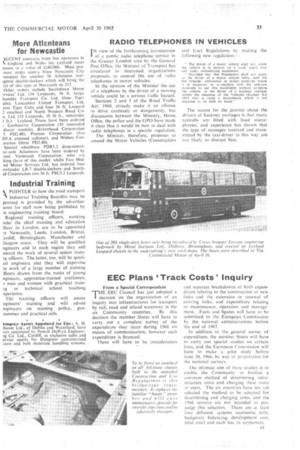RADIO TELEPHONES IN VEHICLES
Page 35

If you've noticed an error in this article please click here to report it so we can fix it.
I N view of the forthcoming introduction of a public radio telephone service in the Greater London area by the General Post Office, the Minister of Transport has circulated to interested organizations proposals to control the use of radio telephones in motor vehicles.
In the opinion of the Minister the use of a telephone by the driver of a moving vehicle could be a serious traffic hazard.
Sections 2 and 3 of the Road Traffic Act; 1960, already make it an offence to drive carelessly or dangercafsly, but discussions between the Ministry, Home Office, the police and the GPO have made it clear that it would be best to deal with radio telephones in a specific regulation.
The Minister, therefore, proposes to amend the Motor Vehicles (Construction and Use) Regulations by making the following new regulation:—
" The driver of a motor vehicle shall not, while the vehicle is in motion on a road. spea!: into any radio transmitting equipment.
" Provided that this. Regulation shall not aPply to the driver of a motor vehicle -beini, used for lire brigade, ambulance or police purpo ;es where it is necessary in ctinection with the relevant purposes 10 use this equipment without storming the vehicle, or the driver of • a hackney carriage within the meaning of • the Vehicles (Excise) AO 1%2 who is using a microphone which is not required to be held by hand."
The reason for the proviSo about the drivers of hackney carriages is that many taxicabs are fitted with fixed microphones, and experience has shown that the type of messages received and transmitted by the taxi-driver in this way are not likely to distract him.




































































































